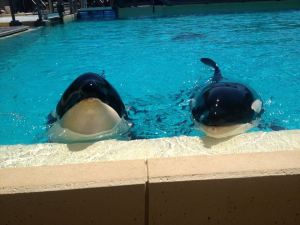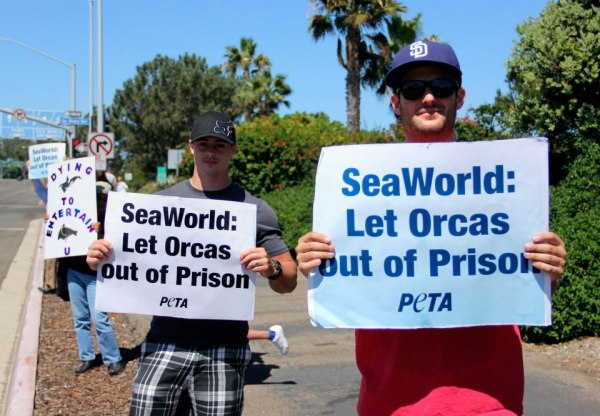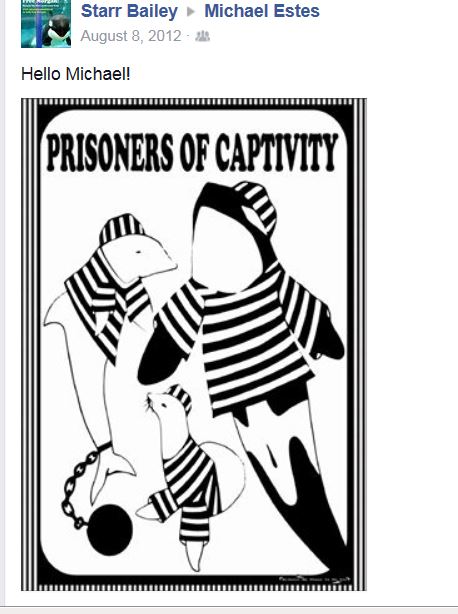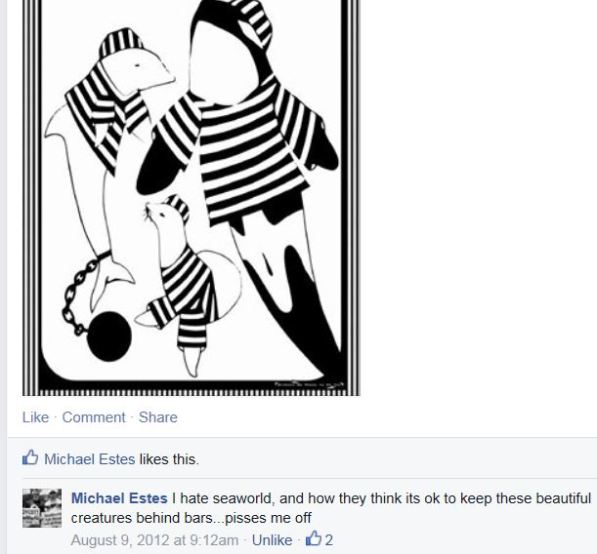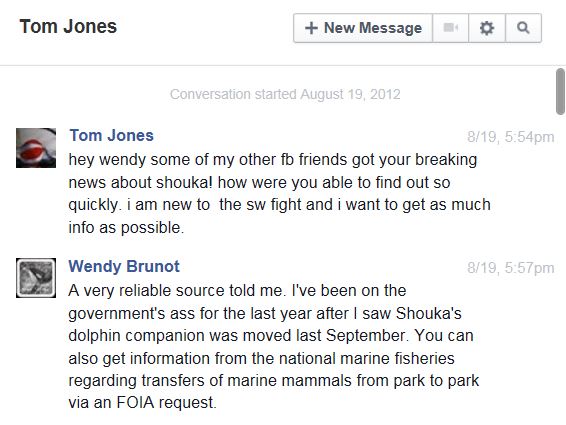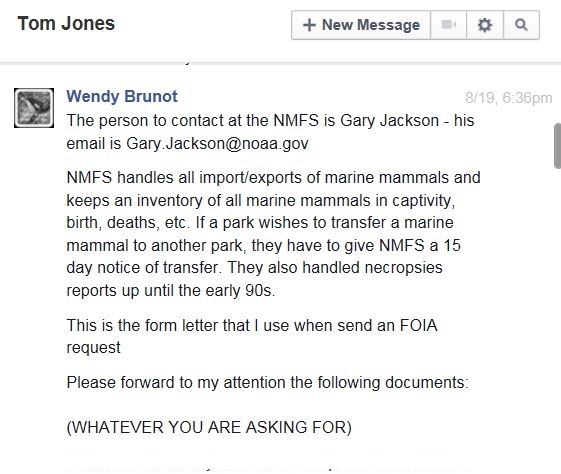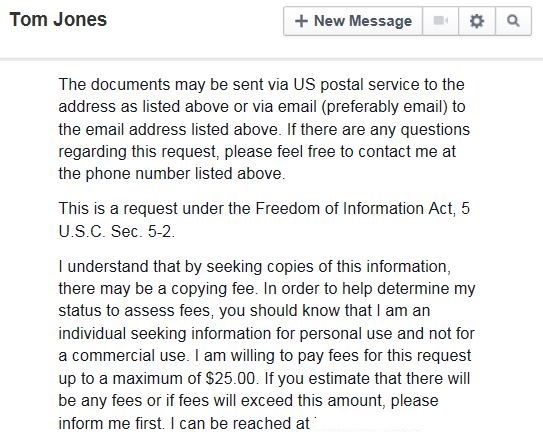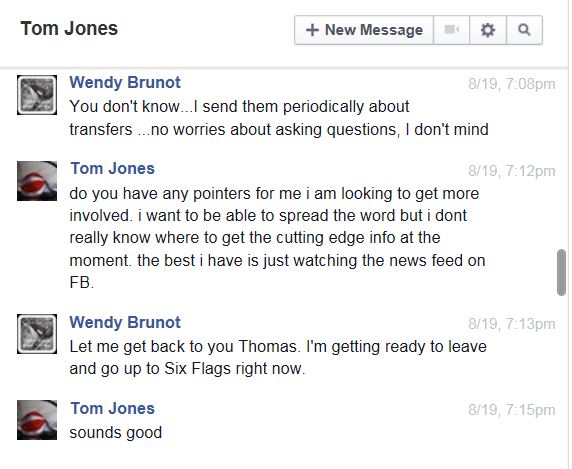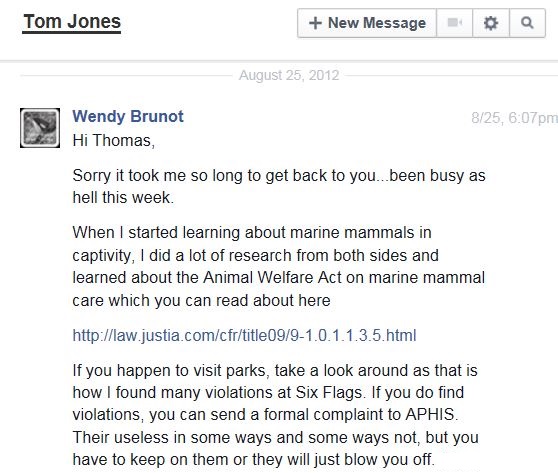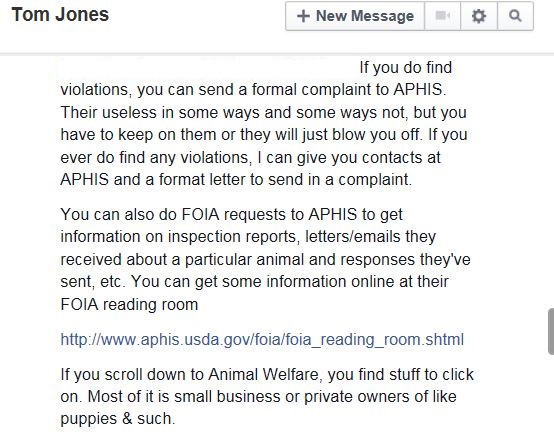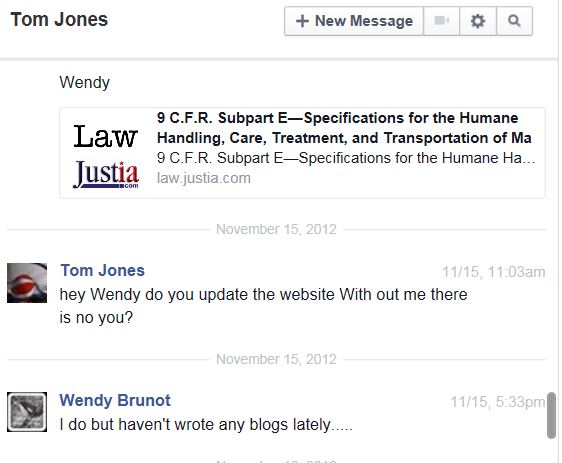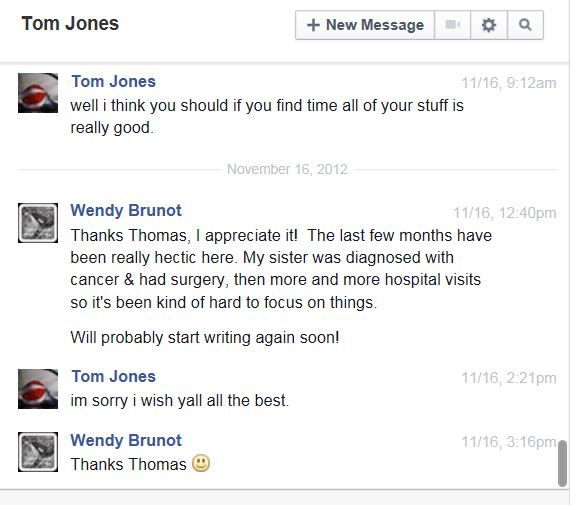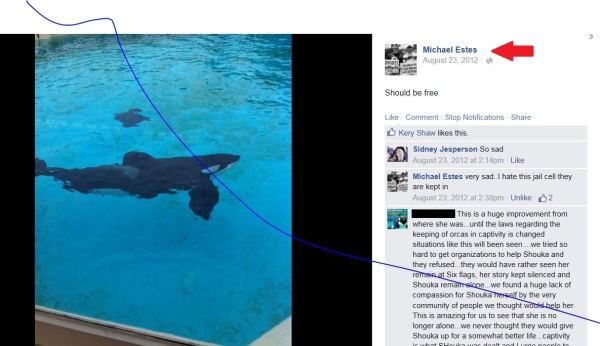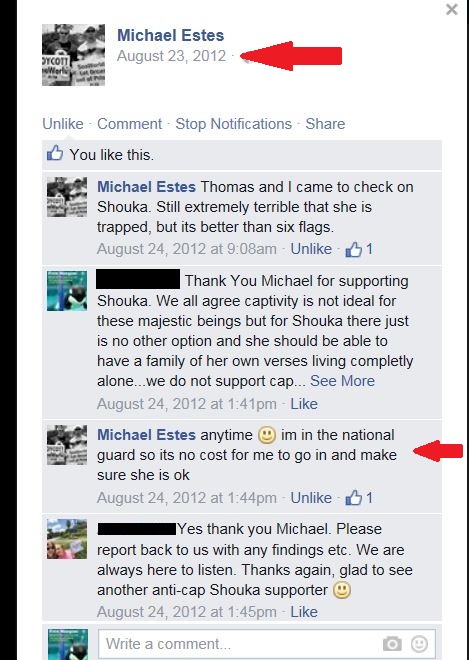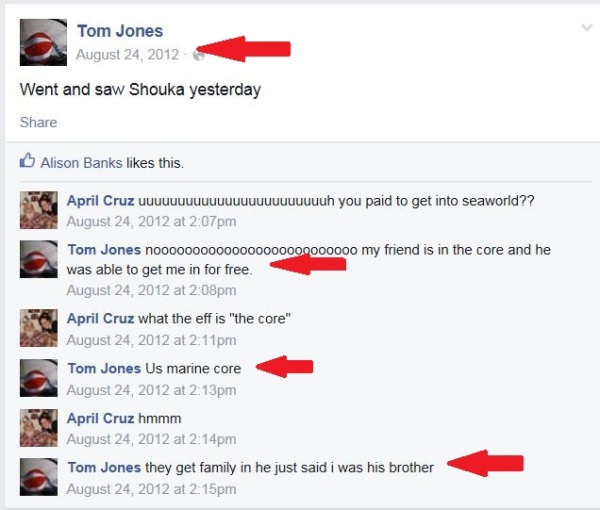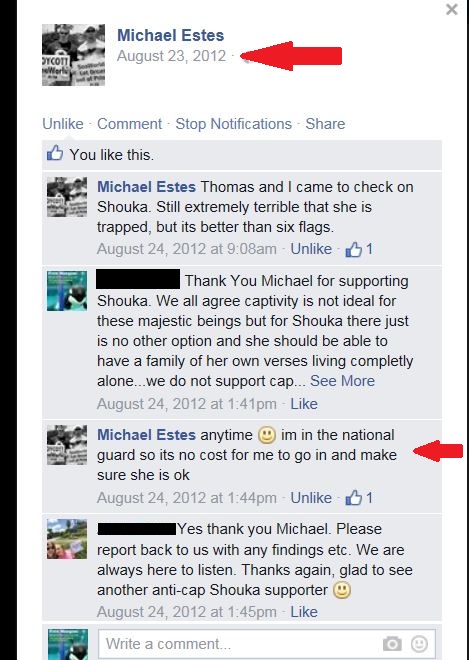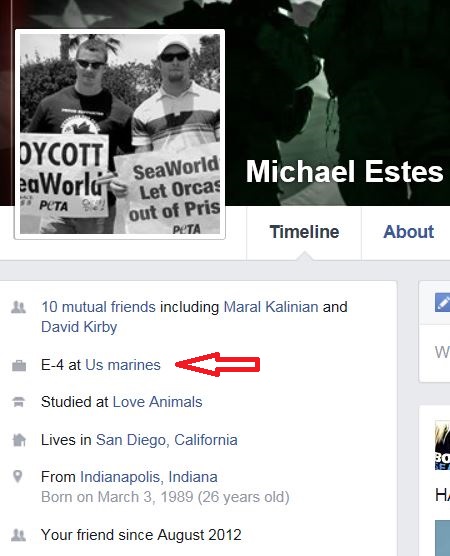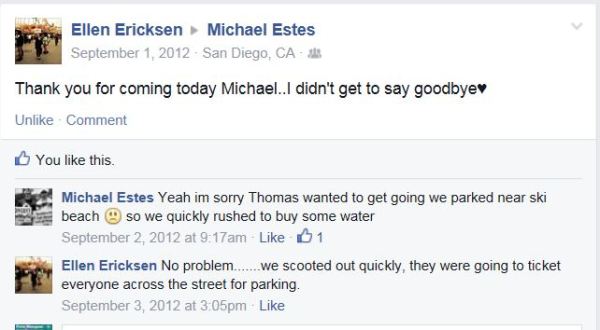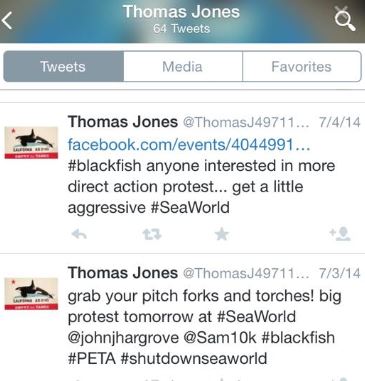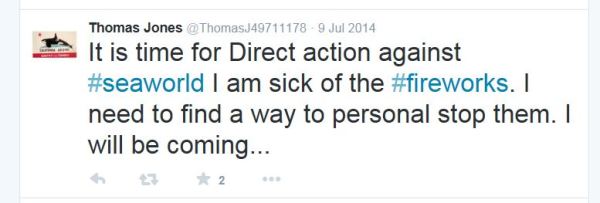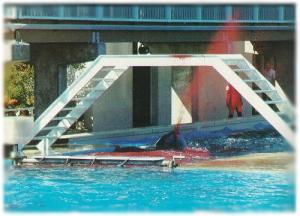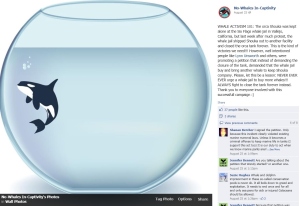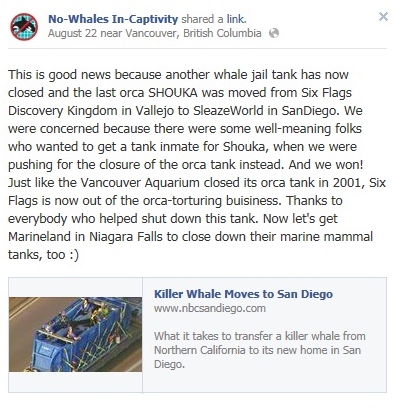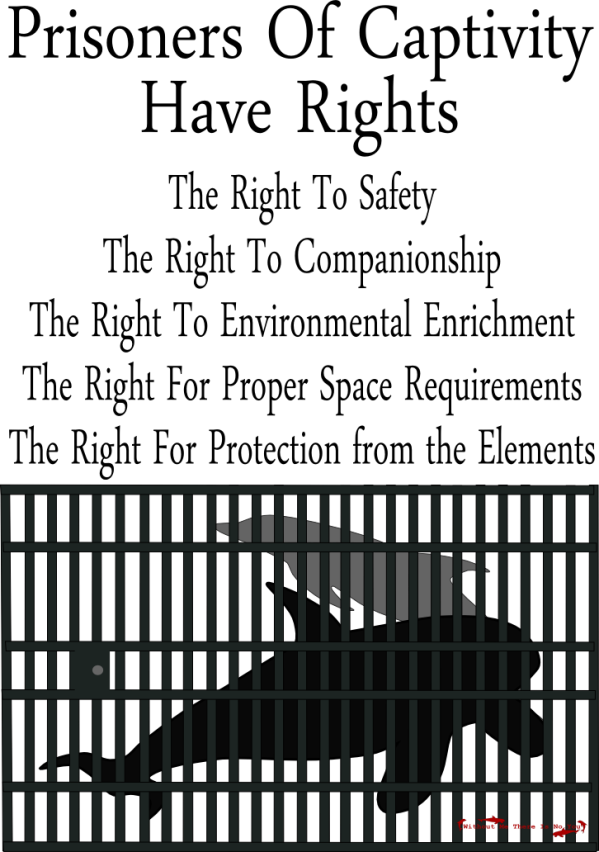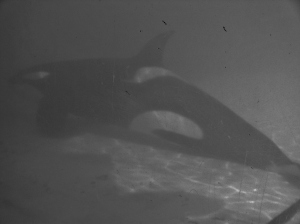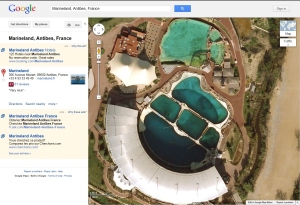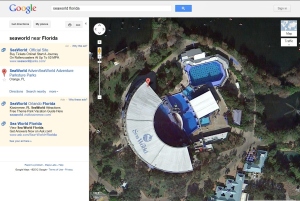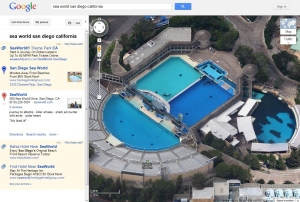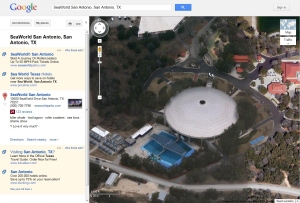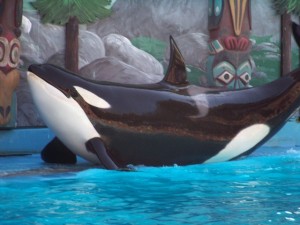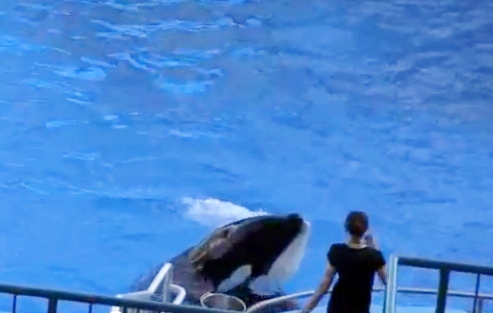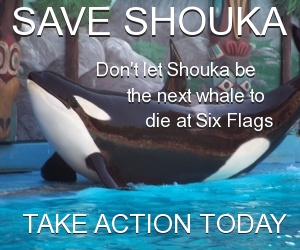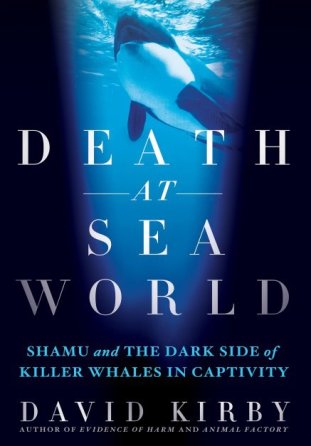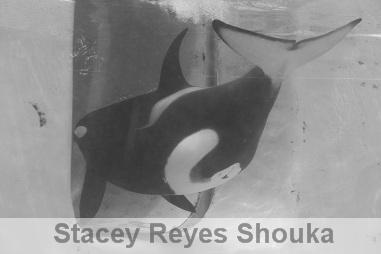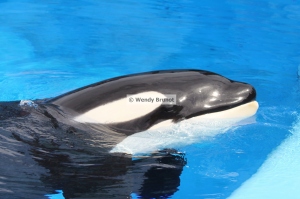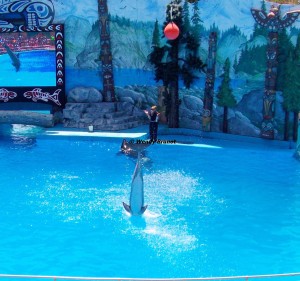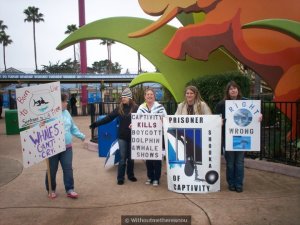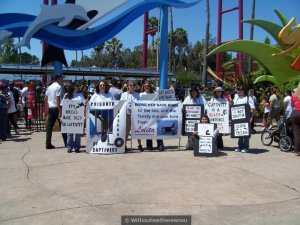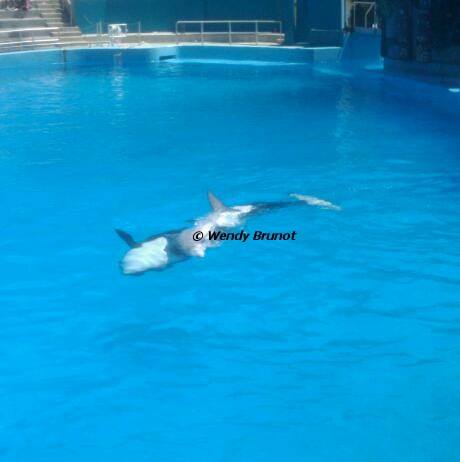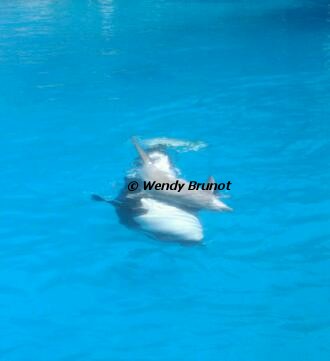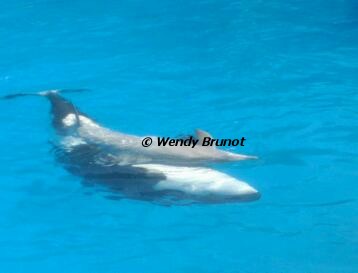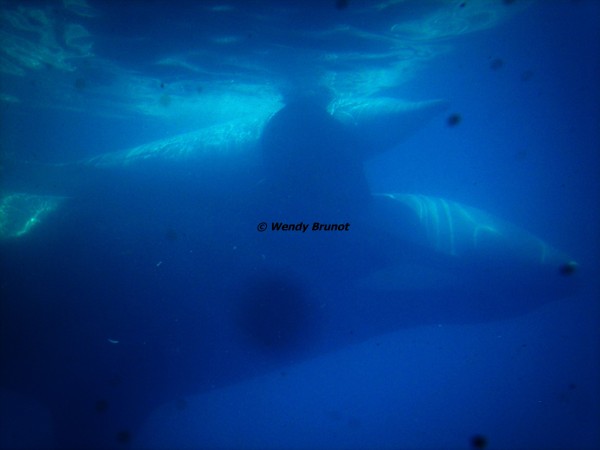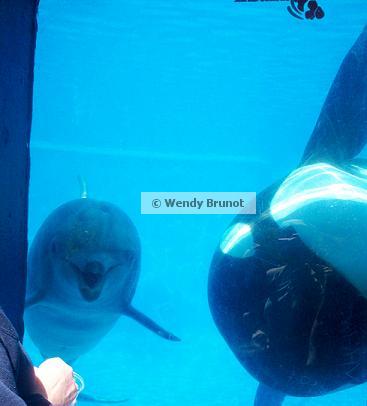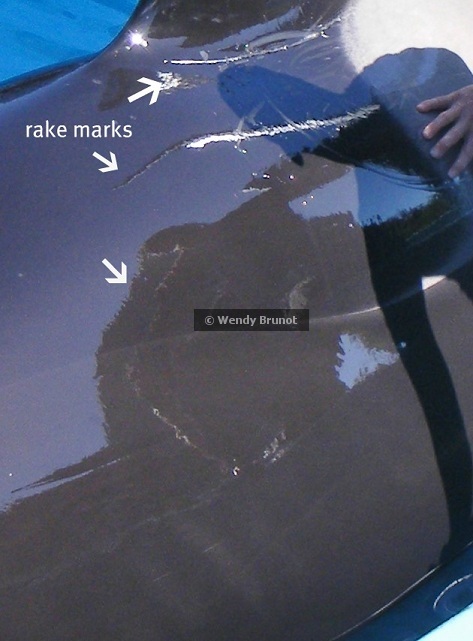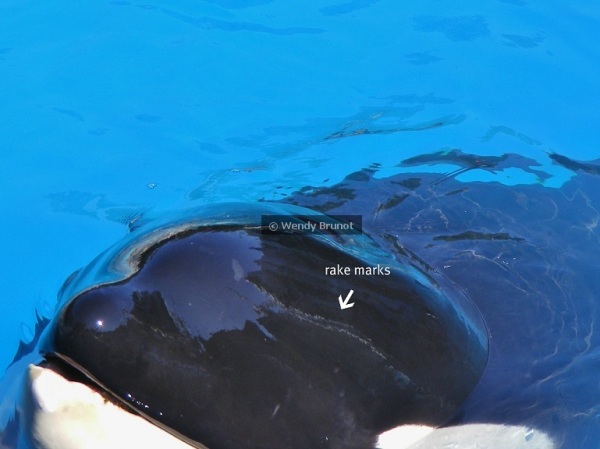This is an older blog from our archives recently republished
Let’s make this the “century of global compassion, the era of empathy” and get rid of negativity once and for all-
non-human animals are not things
Times are changing and so are the animal right activists.
“We live in a troubled and wounded world that is in dire need of healing. We all should be troubled and terrified by what we have done and continue to do. Humans are an arrogant lot and we have made huge and horrific global messes that need to be repaired now. The overriding sense of turmoil is apparent to anyone who takes the time to pay attention. Researchers and non-researchers alike are extremely concerned about unprecedented global losses of biodiversity and how humans suffer because of our destructive ways. We are animals and we should be proud and aware of our membership in the animal kingdom. However, our unique contribution to the wanton decimation of the planet and its many life forms is an insult to other animal beings and demeans us.” – Marc Bekoff
There is a new generation of activists emerging. The older generations of animal activist mainly focused on shutting an indusrtry down or establishing laws to protect animals in captivity rather these animals were to be used for scientific research or entertainment. The newer generations of activist see that many animals are still suffering needlessly and maybe it is time to start supporting creating better living conditions for the captive animals when they can not leave the faciltiy they are housed at. There is an old way of thinking that is still lingering around today which is bridging a gap between the animal rights communities as this older way of thinking is in direct confliction between the new generations of activist.
The newer generations of activist wish to see many changes with regards to captivity yet at the same time they know that by not standing up for an animal in captivty it is the animal suffering. They also understand the animal may need help immediatly so the course of action is how to improve the conditions right now. These era of activist seem to have a different type of compassion for animals in captivity.
We do not see that helping improve the conditions of an animal in captivity is helping the owner of that animal as the old timers see it. This act would be directly affecting the animal.
We must all try as hard as we can to keep thinking positively and proactively. Never say never, ever. Perhaps a good resolution is that we will all try to do better for animals – both non-human and human – and earth and work for more peace and justice for all. We can and must keep our hopes and dreams alive and putting compassion and empathy on the front-burner is a must, and we must do it now. Marc Bekoff
Our experience with regards to these matters were encountered when a 19 year old captive orca named Shouka was found to be living alone at Six Flags Discovery Kingdom in Vallejo California. The act of keeping Shouka completly alone was a direct violation of the law. Orcas are extremly social and must have companionship to be kept in America in captivity. Our passion to help expose the truth behind orcas in captivity had by this time allowed us to meet individuals with great knowledge of wild orcas as well as captive orcas. We thought this will be simple there is a law clearyl being violated and this will get corrected with the help of a any major animal rights organization. Boy were we ever so wrong. What we experienced over the last 2 years has changed the way we view major animal rights groups and vice versa.
We reached out to any agency we thought could help us clear this matter for Shouka. To our surprise we were meet with complete resistance. No major organization would help us or Shouka. Every avenue we went down was a dead end. We never gave up though we continued to document Shouka, writing complains to the USDA and blogging about her situation.
Eventually we started an online petition asking that the violation be correct.
Shouka’s story made the news and it spread fast across the United States. Suddenly we were getting emails from people in the anticaptivity community stating that this attention was bad and we were treading on thin ice. Here was the problem wild orcas are not captured any longer or imported into America. A captive breeding program exists to help stop the taking of orcas from the wild. In America only three companies own/owned orcas, Miamia Seaqariun (Lolita), Six Flags Discovery Kingdom (Shouka, moved to SeaWorld San Diego 2012) and three SeaWorld parks (all the Shamu’s). This lead to the question of how would Six Flags correct the violation to find Shouka a companion? We were told they could take one from the wild, they would bring another orca from SeaWorld and that would mean Six Flags would have two orcas. We stood firm and continued our fight for Shouka this time taking it to the public and our collegues. We were contacted by an individual named Alex Lewis who is a writer for cyberwhalewarrior.com. Alex came across Shouka’s story and wanted to help us. Alex felt the compassion for Shouka we had been feeling. Alex jumped right in calling organizations reaching out to international activist to see if they would campaign with us all to get Shouka home to France. This move also placed Alex in a postion where she was under attack for not demanding Shouka be placed in a seapen. Daily now Alex was defending Shouka, she stood firm as well.
Holise a writer for cyberwhalewarrior.com who works with Alex wrote a great article about Shouka’s situation.
We also began to reach out to a few other younger anticaptivity activist that we know explaining what was occurring and how we were frustrated we could not get help for Shouka, they all jumped in to share blogs along with her petition assuring us we were doing the right thing for Shouka no matter what others were saying. We reached out to Naomi Rose and Howard from Orca Network for solutions for Shouka and if a seapen be best and how could we help Shouka right now. It was concluded that a seapen would not benefit Shouka right now and that her agression towards her trainers may escolate.
In the end a handful of younger activist along with Orca Conservacy, Samantha Berg a former seaworld trainer and David Kirby arthur of Death At SeaWorld helped us get over 7,000 signatures on Shouka’s petition. These individuals went against everything the anticaptivity is about these days – advocating for a seapen for captive orcas. David Kirby was kind enough to share Shouka’s story at his book signings. David also wrote a blog about Shouka calling her the “The World’s Loneliest Whale”.
Shouka has been relocated to Six Flags San Diego where for the first time in 10 years she is with another orca.
The major census is that once an individual animal is deemed owned and in captivity many animal rights groups would/will not touch complaints to improve the individual animals living conditions as it will only benefit the park for the animal to have a slightly better living condition. This makes no sense to us, the corporation is already benefiting and makeing money while the animal is suffering. What people do not understand about this stratedgy is applying pressure on facilties that house these animals there comes two options
- Improve the living conditions
- Get rid of the animals
Other benefits of this strategy is you can get the public to become interested in the industry including that individual animal. When people connect to an animal especially a captive animal on a personal level they tend to fight for that animal. The public pressure in numbers can begin to break down the comfortability of the industry which are keeping the animals in poor conditions.
“If we make the choice for peace, not only for humanity but for all beings everywhere, then the first example indicates a new direction toward a new world. But if we continue to choose conflict, then the second example will strengthen the terrible momentum toward global catastrophe”- Thomas
SeaWorld Employee Agent Provocateur And A Second Spy
In 2012 two men showed up in the orca anti-captivity movement on Facebook claiming to hate what SeaWorld was doing to their orcas and seeking to join in with protesting these activities. The two men named Tom Jones, now known as SeaWorld employee Paul McComb and McComb’s friend Michael Estes are seen below at a P.E.T.A. sponsored protest at SeaWorld.
Photo provided by April Cruz
I was contacted by Michael Estes on August 8th, 2012 through Facebook. I saw a post where Michael stated on his Facebook page he was “looking forward to being in this fight with you guys!” I accepted his “friend request” as usual.
During this time “Tom Jones” aka Paul McComb sent a friend request to my partner. She too accepted his “friend request”. Little did we know we would become target’s used to help SeaWorld try to gain information, as well as having a person who was encouraging direct action against SeaWorld on our Facebook friends list.
Later in August an anonymous tip/rumor was sent to my partner regarding the move of a captive orca named Shouka. My partner posted this rumor to Facebook the afternoon of the day Shouka was suppose to be moved to SeaWorld San Diego. Within minutes Tom Jones sent my partner numerous messages regarding this rumor among other inquiries. Below are the screen shots taken from the conversations between my partner and Tom Jones aka Paul McComb.
This is the only and last contact my partner had with Tom Jones “Paul McComb”. Shortly after Shouka arrived at SeaWorld San Diego Michael Estes told me he was going to see Shouka with his friend, they went and Michael posted pictures which some of them I interacted with him.
That was the last we heard from them or about them until recently….P.E.T.A. released the link between Tom Jones being a SeaWorld employee publically. As I was reading the article I immediately knew my connection to “Tom” and realized who Michael was. I searched my friends list and found Michael Estes still on it. I was trying to make the connection with evidence between Tom and Michael and here is what I found
After understanding all of this I don’t know what surprised me most- the fact that a SeaWorld employee did this considering SeaWorld’s claims of values and was placed on PAID leave or that it involved a Marine Corps individual. The SeaWorld employee Tom aka Paul McComb tried to get others to incite violence against an organization who’s only fault is not agreeing with the issue of rather orcas deserve to be in captivity or not. This makes Paul McComb by definition a agent provocateur.
I also noticed that when Tom Jones from Facebook who messaged my partner on Facebook which are listed above made numerous spelling errors, even in his message between another girl on his Facebook post he made the mistake of spelling corps as core….yet in the twitter posts he put out there are not numerous spelling errors. This makes me wonder if another individual is running the Twitter account other than the one running the Facebook page.
SeaWorld’s Video Response To Blackfish Movie: The Importance Of Killer Whale Social Structures
 On January 13, 2014 SeaWorld released a video on their Youtube account titled “The Importance of Killer Whale Social Structures – The Truth Is In Our Parks and People”. The spokes person used in the video is Chuck Tompkins, VP of animal training at SeaWorld Orlando. Mr. Tompkins has been with SeaWorld since February of 1978.
On January 13, 2014 SeaWorld released a video on their Youtube account titled “The Importance of Killer Whale Social Structures – The Truth Is In Our Parks and People”. The spokes person used in the video is Chuck Tompkins, VP of animal training at SeaWorld Orlando. Mr. Tompkins has been with SeaWorld since February of 1978.
The video starts out by stating “There’s a statement in Blackfish made that we separate our calves and mother killer whales and that is far from the truth. We recognize the importance of family bond.”
Mr. Tompkins statement is far from the truth if you look the family bonds being broken, as to date there have been at least 18 orcas in captivity under the care of SeaWorld that have been separated from their mother. The youngest known orca Keet, was separated from his mother was only 1 year, 8 months old at the time of his separation. In the wild Keet would have lived his entire life span with his mother.
Chuck Tompkins is very aware of how many orcas have been separated from their families as I mentioned previously he has been with SeaWorld since 1978. Nine of these babies were males and would have spent their entire lives with their mother in the wild. The other 9 females may also have spent their entire lives with their mother and siblings creating a larger pod or some may have split away creating their own pods. SeaWorld did not recognize the importance of family bonds for these babies and mothers.
M – Ikaika- MO -separated from mother at 4 years, 2 months
F – Kayla- SW -separated from mother at 2 years, 2 months
M – Keet- SW -separated from mother at 1 year, 8 months
M – Keto- LP -separated from mother at 3 years, 9 months
F – Kohana- LP -separated from mother at 3 years, 9 months
F – Shouka- SF -separated at 9 years
F – Skyla- LP -separated from mother at 2 years old
F – Takara- SW -separated from mother at 12 years, 8 months
M – Tekoa- LP -separated from mother at 3 years, 4 months
M – Trua- SW -separated from mother when he was 3 years, 2 months
M – Tuar- SW -separated from mother at 4 years, 10 months
F – Unna- SW -separated from mother at 6 years
F – Halyn- SW -separated from mother immediately due to mother’s rejection
F – Kalina- SW -separated from mother at 4 years, 4 mos; reunited at 9 years
F – Katerina- SW -separated from mother at 2 years, 5 months
M – Splash- SW -separated from mother at 2 years, 6 months
M – Sumar- SW -separated from mother at 10 months old
M – Taku- SW -separated from mother at 13 years, 2 months; died 11 months later
Did Chuck Tompkins forget about the four captive born SeaWorld orcas which have been placed on loan from SeaWorld Inc. to Loro Parque in Spain (2006) and currently still reside there, which were all taken from their mothers and sent to another country with NO adult matriarch to teach them orca culture? Did he forget to mention the disruption they created for the babies when they broke any of the bonds these babies made with the other artificially created pod members they had made prior to be taken to Loro Parque? Skyla was only 2 yrs old when she was taken from her mom and placed at Loro Parque, Kohana was just 3 yrs and 9 months when taken from her mom to be sent to Loro Parque, Takoa was already separated from his mom at the age of 3 years and 4 months before going to Loro Parque and Keto was 3 years and 9 months and he too had already been separated from his mom before going to Loro Parque. Keto would later kill his trainer.
SeaWorld would learn how devastating it would be to these 4 babies to be removed and taken to Loro Parque over the next few years. You can learn more about these four separated baby orcas in article called “A Close-Up Look At Loro Parque” written by Tim Zimmermann. One of these four Orcas Keto would go on to kill his trainer, Alexi Martinez, which is touched upon briefly in the movie Blackfish as well as in an article I wrote back in 2011 titled “Orca Trainer Alexis Martinez, Death at Loro Parque Caused By Known Aggression”
I would like to take this time to state SeaWorld began taking part in capturing orcas from the wild around 1966. During these captures it was VERY clear to all involved the family bond between babies and mothers, actually entire pod members was extremely important and the social structure was one man had rarely seen in animals. During the captures the pod members would circle the netted orcas refusing to leave. Witness statements recalled include:
“The Munros were in their sailboat that day. They watched the violent whale capture and heard the whales inside and outside the nets, crying to one another in their little-understood language.
I was on the shoreline, a (Evergreen State College) student, working as a reporter for the Cooper Point Journal, and was struck deeply by those same eerie cries. Those sounds are etched in my memory and the Munros’ memories forever.
“When we went sailing and saw this accidentally, it changed our lives,” Munro said.
In this video taken from a segment from the nationally syndicated, Emmy Award-winning 1999 special, “Baby Wild Films Presents: The Killer Whale People,” hosted by Heart’s Nancy Wilson you will here recounted stories of how horrible the captures in 1970 were for the men capturing the orcas, as well as for the mothers who were losing their babies and other family members. SeaWorld was well aware at this time of the orcas social structure between mothers and babies and as well with other pod members. The importance of keeping mothers and babies and even full pod family members together is not new information for SeaWorld nor is it current information they have learned from the actual act of keeping orcas in captivity. SeaWorld learned this from capturing them 40 years ago, yet they still separated orca families in captivity for all these years.
If not for Washington Secretary of State Ralph Munro who witnessed one of these captures these captures and separation of family members would have continued. Munro describes a tragic story of whaling and brutal captures that split apart whale pods and resulted in the collateral damage deaths of dozens of marine animals. During the capture Munro witnessed an aircraft and explosives being used to confuse the orcas. Munro subsequently filed a lawsuit that led to an agreement with SeaWorld to stay out of Puget Sound. In this video Ralph Munro speaks publically about the captures he witnessed and how he and others stopped SeaWorld from taking more orcas from the U.S. waters in Washington.
“We currently have Katina with two of her babies in the pool and we recognize this and keep them together as a family. We also have the largest data base of information about calves and how they relate with their mother, and when they do their independence, when they nurse when they stop nursing, all that we’ve learned from having these family groups together, but as a zoological professional it is NOT True we separate our mothers and calves ”
Yes, currently they have Katina with her two babies but is this due to public pressure and the mounting evidence against SeaWorld regarding the lack of consideration they have held for so many years regarding orca family bonds? Katina has seven immediate offspring not two. Mr. Tompkins shared with us only two of the offspring that she is living with, what about the other 5? Katina also has nine, as we would call them grandchildren, did you hear any mention of those that she is living with? If Katina was allowed to have developed her own pod, as of her breeding in the hands of SeaWorld, it could have consisted of 17 members including herself. Katina has never been allowed to be with her entire off spring to feel the power of the pod she could have been the matriarch to. Instead SeaWorld has moved her offspring to other parks to create new “pods” for people to be entertained in other parts of the world.
So I question and ask others to question the statement “but as a zoological professional it is NOT True we separate our mothers and calves” which came directly from Chuck Tompkins representative for SeaWorld.
One last topic I would like to just briefly touch upon is Morgan a wild caught baby orca. The goal and permit that allowed the capture to occur was to rehab and release Morgan back to the wild and if they could find her family back with her family.
SeaWorld stepped in and prevented Morgan from being rehabbed back to the wild and instead now Morgan is owned by SeaWorld and resides at Loro Parque in Spain. SeaWorld could not import Morgan to America due to current capture laws. SeaWorld found a way to gather new breeding stock from the wild and prevented Morgan from going back to her mother and pod. You can read more about Morgan through the Free Morgan website
There is no doubt the truth behind SeaWorld and the Orcas they keep in captivity is under fire and just keeps growing. One has to question the sincerity behind the motivation that has caused SeaWorld to release this new video. Will Katina remain with her babies throughout their lifetime is yet to be seen and the public needs to keep a close eye on these three captive orcas along with any others that may be born into captivity.
If you have not seen Blackfish you can view the entire documentary online free at Blackfish
I also suggest others read the book DEATH AT SEAWORLD: Shamu and the Dark Side of Killer Whales in Captivity written by David Kirby
Do Your Part – Don’t Buy a Ticket!
Whale Activism 101 Vs. Whale Rights 101
Recently an organization from Canada called “NoWhales In-Captivity” made a public statement on Facebook regarding Shouka and the petition that was circulating to get Shouka a companion.
WHALE ACTIVISM 101: “The orca Shouka was kept alone at the Six Flags whale jail in Vallejo, California, but last week after much protest, the whale jail shipped Shouka out to another facility and closed the orca tank forever. This is the kind of victories we need!!! However, well intentioned people like Lynn Unsworthand others, were promoting a petition that instead of demanding the closure of the tank, demanded that the whale jail buy and bring another whale to keep Shouka company. Please, let this be a lesson: NEVER EVER EVER urge a whale jail to buy more whales!!! ALWAYS fight to close the tank forever instead. Thank you to everyone involved with this successful campaign :)”
At no time did this petition ever demand a whale be purchased for Shouka’s companionship as stated in the post from No Whales In Captivity – “well intentioned people like Lynn Unsworth and others, were promoting a petition that instead of demanding the closure of the tank, demanded that the whale jail buy and bring another whale to keep Shouka company. Please, let this be a lesson: NEVER EVER EVER urge a whale jail to buy more whales!!! ALWAYS fight to close the tank forever instead.”
We are being contacted by individuals who signed the petition, questioning the post because they did not remember seeing the petition stating for the purchase of another whale. No Whales In Captivity has been corrected several times through personal messages regarding this statement and has been asked personally by Wendy Brunot to remove it from public view for numerous reasons.
- The posting is degrading to every individual who signed the petition, over 7,000 people.
- The posting is a false statement and is being passed around as truth.
- They are publicly shaming individuals for signing the petition.
The post remains after the request to remove it. Not one time did No Whales In Captivity contact Wendy Brunote or myself regarding the wording on the petition and why we worded it that way nor did they even allow the post for Wendy to be able to make a public comment regarding what they were saying. A strange public apology was made to Wendy Brunote regarding this post and other people’s comments such as this one from
No Whales In Captivity is also taking credit for closing a tank at Six Flags Discovery Kingdom. This organization did nothing for Shouka but leave her to sit in confinement. On a Facebook post dated August 22nd, 2012 No Whales In Captivity stated “We were concerned because there were some well-meaning folks who wanted to get a tank inmate for Shouka, when we were pushing for the closure of the orca tank instead. And we won!
Where? When were they pushing for the tank closure at Six Flags Discovery Kingdom? Because not one group would stand up for Shouka’s rights or fight to close this tank down in the three years we have been concerned about Shouka. Not one organization stood up to help us fight for Shouka’s right, not one.
No whales in captivity is taking the meaning of the petition along with the good efforts of many indivduals out of context and using it as a victory for their cause.
There is a dark history between the organization” No Whales In Captivity” and Shouka that this organization is not sharing with the public.
In 2002 a male wild caught orca named Kshamank was to be imported into America to be a companion for Shouka. Many organizations worked to try to block the importation of Kshamank. Kshamenk’s importation was stopped by the high court of Argentina.
Shouka arrived to the United States theme park Six Flags Worlds of Adventure before Kshamenk’s case settled in court which meant Shouka would not have a companion while living at Six Flags, a violation of the Animal Welfare Act in the United States. I was told by Annelise from No Whales In Captivity “If it wasn’t for our work (and other groups) since 1992, Six Flags would happily be buying more whales right now.”
The darkness with Shouka now comes into play No Whales In Captivity KNEW Shouka was alone since 2002. They did NOTHING for Shouka. No Whales In Captivity did not continue a fight for Shouka when they knew she was alone…. instead they left a victim behind due to their style of advocacy work. They left a “whale” to live a life of isolation with no concerns for her all out of fear.
After the courts denied the importation of Kshamenk No Whales In Captivity among the other groups working on these matters could have campaigned to have Shouka’s permit revoked under the law and could have actually won most likely since the law was on their side. Thus closing a tank long ago. Instead they allowed Shouka to sit alone all this time knowing it was a violation of the law and it was due to advocacy work of many organizations. To claim this as a victory but downgrade the individuals who signed the petition for Shouka is outrageous to me and many others.
Another victory that No Whales In Captivity claimed to me was Bjossa being moved from Canada to SeaWorld. “In 2001, we closed the orca whale tank in Vancouver by simply opposing ANY new inmates coming to Vancouver.” No Whales In Captivity claims it to be a victory because they closed a tank down even though Bjossa remained in captivity. No Whales In Captivity stated to Wendy Bruno “our strategy is to discourage the companionship argument because it perpetuates whale jails“. This is a total disregard for American law and the rights of cetaceans in captivity. On the website for No Whales In Captivity they state they are a law-abiding organization yet they supported the law being violated regarding Shouka remaining alone by not standing up for her rights as an organization and working to close down a tank with which housed only one “whale”. Moving a whale from one park to another leaves the animal still in captivity and I am not sure if this is really a victory in itself. We do not feel Shouka being moved to SeaWorld is a victory yet we do feel her being with others orcas is a victory for Shouka. We certainly can not claim a victory for closing a tank because we have no idea what will be placed in Shouka’s old tank as of right now. The park is not announcing what is happening with that tank until 2013.
What is not being acknowledged by No Whales In Captivity is this above stated strategy leaves animals suffering alone in captivity such as Shouka. To me personally this organization is no better than those who keep whales in captivity. This organization does not care about the actual welfare of the animals nor their rights by law while in captivity, they care about shutting down a tank as stated by Annelise from No Whales In Captivity. This organization only cares about shutting down a tank even if it means the whale goes from one tank to another such as the case with Bjossa.
No Whales In Captivity worked to try to stop the importation of a some dolphins from a Taiji hunt into a Canadian park, which was a violation of Canadian law. The groups efforts went unheard and the dolphins were imported anyways. Once the dolphins went into captivity the group admits they stopped working on the issue even though it was a violation of Canadian law and the dolphins remain in captivity to date.
The petition clearly stated the concerns were the violation of the law and that Shouka have a compatible companion. The concern of Wendy Bruno and the over 7,000 people who signed the petition was not shutting down a tank…they were concerned for the well being of Shouka and her trainers. No Whales In Captivity is trying to shame people who actually cared about the welfare of a captive orca all in the name of “proper advocacy that they claim works”. Shouka is no longer at Six Flags and as of right now that tank sits empty without using their strategy.
I was told by No Whales In Captivity “Eventually, our local whale jail will run out of cetaceans. It works. And that’s why we want everyone to know that this strategy works: close the tanks! We disagree on strategy, that’s all ”
There is no disagreement on strategy as the work that was done by Wendy Bruno and myself came from the heart. There was no strategy involved. We had empathy for Shouka and so did the individuals who signed the petition. We watched as Shouka’s behavior changed over time. We cared about Shouka and what would be best for SHOUKA, not the CAUSE. The CAUSE failed Shouka. No Whales In Captivity did nothing over the last ten years for Shouka nor did they have a public campaign to fight to close the tank at Six Flags Discovery Kingdom. They were content with Shouka just dying off alone. Yet they claim a victory for their cause?? They closed a tank?? I am confused since it was their cause that helped keep Shouka in the position she was in leaving Wendy and other individuals to come and clean up the mess they left behind using THEIR strategy.
I am Thankful for the work of the past efforts and these organizations for without them we would not have come as far as we have with regards to captivity issues. I though will not allow any organization to claim credit for something the people did with no help and distort a situation for their benefit.
I will not apologize for helping Wendy with the wording in the petition nor will I apologize for helping Shouka have a better life in captivity. I did not place her in captivity, nor have I been involved with these issues for 20 years or more, which by now laws should have been changed through the efforts of organizations such as No Whales In Captivity by now so that no organization needs to live in fear of helping a cetacean because another animal may have to move from another park to be a companion.
Marc Bekoff stated-
“Let’s make this the “century of global compassion, the era of empathy” and get rid of negativity once and for all. Perhaps a good resolution is that we will all try to do better for animals – both non-human and human – and earth and work for more peace and justice for all. We can and must keep our hopes and dreams alive and putting compassion and empathy on the front-burner is a must, and we must do it now”
So for those of you who signed the petition please do not feel guilty. Please do not be ashamed of your efforts. Shouka is in a better place and doing better. Please be proud you stood up for an animal’s rights when no one else would. Please know that you are a better person for caring about Shouka, not just the cause. Please do not allow others to disgrace your efforts for Shouka or any other animal that may need help in captivity. Until the laws are changed no animal should be left behind in captivity all in the name of animal rights and welfare. It is time for a change… the old ways of thinking “JUST CLOSE THE TANK!” is not the answer today. Today is a new day, one of compassion & empathy, one where new advocacy is needed for the animals in captivity. They do not have a voice, they depend on us. Please stand up for them and we all can continue to get the laws changed and eventually phase out the keeping of cetaceans in captivity as well. And please do not allow organizations who have no efforts towards helping captive animals who are suffering due to violations of the laws blind you. In the end it really is about the animals rights AND working towards changing the laws.
THANK YOU EVERYONE THAT HELPED SHOUKA!
I would like to note that credit must be given to Six Flags Discovery Kingdom and Marineland France for doing right by Shouka…. well at least the best they could or saw fit for her. These corporations did not have to make the choice they did for Shouka, they could have easily placed another dolphin in with Shouka and called it a day. Six Flags will take a minor loss of patrons but they did it. I hope that they will learn, be cautious and even more responsible on how they replace Shouka’s show in 2013. Who knows lots of people want a new roller coaster.
Interview With Dr. Naomi Rose Regarding Shouka
There has been a lot of discussion to as what may best for Shouka, a 19-year-old female captive born orca, who is currently being singly housed at Six Flags Discovery Kingdom in Vallejo California. Singly housing an orca is a violation of Section 3.109 of the Animal Welfare Act due to the need for social companionship orcas require. Pressure has been placed on APHIS and Six Flags Discovery Kingdom to correct the issue for almost 1 year now. Many people think Shouka should be moved to a SeaWorld facility in the U.S.A. and others oppose this move stating Shouka would become a breeding cash cow. Shouka would add new genetic diversity for Sea World’s in-house captive breeding program allowing Shouka to have offspring that would help keep the captivity of orcas on the rise. As of right now SeaWorld is facing a major issue with potential inbreeding with their current stock of orcas. Some people believe the move back to France where Shouka was born would be too stressful on her, despite no orca has ever died during a transport or directly after a transport. SeaWorld moves their orcas from park to park and even out of the country frequently. Some orcas have been moved several times.
Sea World is also thought to not be a good option as they have so many orcas already. SeaWorld’s holding tanks have failed to grow in size as they have continued to add orcas from their captive breeding program. At one time Sea World was recognized for having large holding tanks for their orcas, yet as time has gone on they have added many more orcas without modifying the tanks. Today many look at Sea World’s tanks to be small and over crowded which seems to be leading to more aggression towards trainers and other orcas residing in these pools. Some people wish to see Shouka go back home to France with her family and Freya a wild caught orca who helped raise Shouka. Marineland which is in Antibes, France houses just five orcas.
SeaWorld has three parks and houses 20 orcas between them – 8 in San Diego, 5 in San Antonio and 7 in Orlando. SeaWorld is housing 6 orcas in Loro Parque in the Canary Islands as well. Sea World will only continue to add new orcas in these existing pools. As of right now Sea World San Diego has one pregnant orca due soon along with another baby orca due at Loro Parque due any day as well.
Some people think Shouka should go to Marineland Canada. We have discussed this option in a previous post regarding Marineland Canada and Shouka. Also see new shocking undercover footage from Marineland Canada
While many believe Shouka should be set free to a seapen which does not exist and will never remedy the social companion issue.
Shouka could remain at Six Flags as long as another park steps up to help find a compatible companion for Shouka. One thing is for sure whatever takes place regarding Shouka’s future will way heavy on the hearts of many. If Shouka is moved to another park other than France she will be with complete strangers and that also means lots of fighting to establish dominance. There is no assurance other orcas would be compatible for Shouka at any park. The very industry that created Shouka has failed Shouka. These are things that these parks will not tell you, the needless suffering that occurs to orcas in captivity.
In the wild Shouka would make her own choices. These choices have been taken from Shouka by the industry which has failed Shouka along with every off spring she may produce in the future. There are major flaws with regards to the laws for keeping captive orcas, housing them and even interacting with them in captivity.
Promoting captivity is very challenging for us as we are opposed to the keeping of orcas in captivity. Our hands are tied in a day when seapens are the talk for captive orcas and we are forced to sway away from this option as there are no seapens & Shouka is owned by a corporation which will never give her up. We reached out to Dr. Naomi Rose the senior scientist for Humane Society International (HSI), specializing in international marine mammal protection issues to get her opinion of Shouka’s current situation. Her areas of expertise include whaling, whale and dolphin watching and marine ecotourism, the dolphin-safe tuna label, marine sanctuaries, acoustic harassment, captive marine mammals (including swim-with-the-dolphin programs), the Marine Mammal Protection Act, and the sport hunting of polar bears, as well as the protection of walruses, seals, sea lions, manatees, dugongs and sea otters.
WMTINY- Based on your extensive research of killer whale social behavior, why is it important killer whales have companionship?
Dr. Rose– Killer whales are probably among the most social mammals on earth. Animal species can be solitary; found in small groups of varying composition (in other words, they group together for reasons that vary and the members of a group are constantly changing); or live in stable groups whose members are bonded for reasons that increase the group members’ survival prospects (these stable groups may be related genetically or not, but group living itself contributes to the members’ survival).
Killer whale groups tend to be extremely stable (in some cases with lifelong bonds) and are kin-based. In some populations, the basic group is a mother and all of her offspring, who remain bonded with her into their adulthood. In other groups, the kin bonds are looser and individual animals are even sometimes seen alone, but only for temporary periods. The basic advantage to living in a group for some orcas is because it increases foraging success – in others, it is because it increases survival success in general. Regardless of the advantage, the killer whale brain is wired for companionship – just as primate (including human), canine, and elephant brains are. Evolution has resulted in an animal that thrives only in a group – a solitary animal can survive, but it is unlikely to thrive.
Given that the need for being in a group is essentially hard-wired into the orca brain, maintaining captive orcas as solitary animals – when they already face physical and mental stressors, such as confined space, monotonic surroundings, lack of choice, and so on – adds an additional stressor that compounds the problems with which they must already deal.
WMTINY – How would it benefit Shouka if she was placed with other killer whales in a captive setting and what do you think it could do to Shouka mentally and physically the longer she is left in isolation?
Dr. Rose– Shouka would be more stimulated and engaged with her surroundings if she was placed with other compatible killer whales. (I stress the need for compatibility – I think being placed with incompatible orcas would be more stressful than being alone.) The longer she is left in isolation the more frustrated and possibly depressed she will become. She was born into a social group (in France) and then was placed in isolation from her own kind. This sort of social transition is no doubt very difficult and stressful for a social species like a killer whale. She literally NEEDS conspecific companionship – again, she can survive without it, but she will not thrive.
I can’t say more than this because it would be pure speculation – each orca is different psychologically. Shouka may have more resiliency regarding her solitary state than another whale might have or vice versa. We can’t know what she’ll do until she does it.
WMTINY – Just earlier this month, Shouka aggressively lunged out of the water towards her trainer 3 times during the beginning of a show that resulted in her trainers working from behind bars for several weeks without physically contact with Shouka during a show. Also, many people who have recently visited the park have commented that they have noticed there have been problems with Shouka refusing to perform. Do you think this could be due to her lack of companionship? And do you feel Shouka could become a liability to Six Flags if she continues to have aggressive moments with her trainers along with refusing to perform?
Dr. Rose– It is very tempting (and parsimonious) to attribute these aberrant behaviors shown by Shouka to her isolation. She has been without another orca for a companion for over a decade, however, and the appearance of these behaviors is relatively recent. Of course, she now doesn’t even have a dolphin with her, as Six Flags has recently moved Merlin, a bottlenose dolphin, into another enclosure. So it may be that being entirely solitary is in fact affecting her mood and she is now acting out of frustration over this untenable social situation.
If Shouka continues this behavior pattern, it may be that Six Flags will have to phase into a non-show format of displaying Shouka (although given the stadium seating at Six Flags’ facility, it’s hard to imagine how they might do that). Or they may have to consider moving her to another facility with other orcas. Obviously if she continues to refuse to perform (let alone act aggressively with her trainers) some sort of change in her circumstances will have to occur!
WMTINY – Could you expand a little bit on the killer whale brain structure in comparison to the human brain as it relates to emotional processing and do you feel from a scientific point of view that killer whales may be capable of feeling emotions we are incapable of feeling or emotions that we may not even be aware of?
Dr. Rose– You are asking for information that doesn’t exist. I am not a neurobiologist, but I can say we know nothing about the emotional processing of the killer whale brain. We don’t know how they process a lot of things – we do know that the orca brain has a very well developed auditory processing area, which makes sense given their dependence on acoustic cues and echolocation, but otherwise the analogs with the human brain are only in the early stages of understanding.
As for whether orcas can feel emotions we are incapable of feeling, that doesn’t make much sense from a biological (scientific) point of view. All mammals probably have the basic capacity for feeling certain similar emotions, such as fear, attachment (affection), depression, and even humor and shame. Whether any non-human animal can distinguish between like and love or feel nervous or be disgusted is unknown but I find it hard to believe that species with sophisticated brains cannot feel sophisticated, subtle emotions. However, given that humans have brains that are clearly capable of extremely sophisticated feats of cognition, the idea that another species with a sophisticated brain (such as orcas) can feel some emotion we can’t feel is difficult to imagine, but obviously anything is possible. Just not probable.
I’m really not sure what you were trying to get at with this question – orcas are mammals, just as humans are mammals. We share some common traits as mammals – and we share some other less common traits, as mammals with sophisticated brains. I DO think orcas think thoughts that we would no doubt find pretty foreign, but I really doubt they feel emotions we wouldn’t be able to recognize.
WMTINY – To your knowledge, is Shouka being kept in isolation a unique situation or have there been other killer whales in captivity that have been housed without another killer whale or dolphin in the same tank or separated by gates?
Dr. Rose– Shouka’s situation is unfortunately not unique. Keiko was held in isolation in a tank in Oregon and later in a sea pen and then unconfined. Lolita has probably been held in isolation periodically over her long life in the Miami Seaquarium – her dolphin companions have come and gone. Same with Kshamenk in Argentina – he has no doubt had periods where he has been entirely alone. Morgan was held in isolation for over a year separated from dolphins by a gate.
WMTINY – How do you feel about Shouka being isolated from companions of her own species for so long?
Dr. Rose– She has been isolated from companions of her own species for over a decade. I think every orca that does not have another compatible orca for companionship is living in the equivalent of solitary confinement for humans. It is a form of punishment in human culture and frankly I don’t see it as anything different in the orcas’ case. They are being punished for nothing at all – and the facilities holding them refuse to accept this and act as though this extremely aberrant social situation is normal.
WMTINY – What do you think is the best option, at this point, to immediately improve Shouka’s situation?
Dr. Rose– The best option to immediately improve her situation is to send her to a facility with other orcas, who will hopefully be compatible with her socially. It is wrong to hold her isolated from other orcas and it is absolutely untenable to hold her without any cetacean companionship at all. Her behaviors and mood will probably continue to deteriorate until she has SOME companion once again in her enclosure. Ideally and pragmatically, I think she should be repatriated to France, where she can once again be with her family.
Shouka Six Flags Killer Whale Attacks Trainer
The question of whether or not working in close proximity with killer whales has been all over the news since 2010 when Tilikum, the killer whale, killed his trainer Dawn Brancheau during a public performance at SeaWorld Orlando. After this incident Six Flags was asked for a statement as to whether they will make any changes regarding working with their killer whale Shouka. Six Flags stated Shouka has a good history with her trainers but now the tables have turned.
A new video released on youtube captured Shouka, a 19 year old captive born orca, attacking her trainer during a public performance. The footage was uploaded on July 7th, 2012 by traviscorbin using an Android phone.
The short clip of the original footage shows Shouka leaping onto the main stage of her show tank lunging towards her trainer which eventually leads to the trainer being lifted into the air and knocked back into the open door area that leads to the back of the stage. Shouka continues to leap two more times onto the stage even after the trainer is out of our view. This is the first time Shouka has been captured being aggressive towards her trainers by a spectator during a public performance. The show was immediatley cancelled after the incident.
Here is the original video clip
We have uploaded the original video and slowed down the actual contact Shouka made to the trainer. This footage shows what happened a bit better as it widened the view from the original Android phone. We also added light to the original footage which has made it a little easier to see the trainer and what is occuring.
Six Flags Discovery Kingdom has not made a public statement regarding this incident between Shouka and her trainer but they have stepped up their safety measures. During a regular show, one of Shouka’s trainer always stands on the stage along with the annoucer. The stage is now empty during the show and trainers have placed themselves near the audience behind safety bars. There is no contact with Shouka during the show…no hugging, no kisses, no touching, just fish thrown at her.
Shouka is rumored to be rather moody & aggressive towards her trainers at times and no water work has been done publicly with Shouka since her move to the United States in 2002. Almost a year ago the male bottlenose dolphin named Merlin that was living with Shouka was removed leaving Shouka to be singly housed with no animal companion, which is a violation of the Animal Welfare Act. Other orcas that have been housed alone have been known to display more aggressive behaviors towards their trainers. Once these singly housed orcas were placed with another orca the aggression ceased from them. Orcas by nature are extremely social beings. With no companion and now limited contact with her trainers, what will this do to Shouka mentally?

There has been a huge amount of public pressure placed on Six Flags Discovery Kingdom along with APHIS to enforce the law and find Shouka a compatible companion over the last year. Upon inquiry to APHIS regarding Shouka’s situation along with the clear violation of the law they have stated that Six Flags Discovery Kingdom is working to find a solution. The matter of Shouka being singly housed may be something Six Flags Discovery Kingdom is working towards but how long is this matter going to take to solve? The bigger question is how long will APHIS continue to allow this matter to go unresolved. The problems Six Flags Discovery Kingdom is facing is how do they met the needs of Shouka or what do they do with Shouka. Shouka is on a breeding loan to Six Flags Discovery Kingdom from MarineLand France, yet this is the 10th year Shouka has been here in the United States with no off spring or known attempts for breeding and almost half of her time spent in the U.S has been in isolation. How long will MarineLand France allow Shouka to remain under these conditions of solitary confinement? Shouka has some family members in France. The biggest problem is there are no orcas to place with Shouka. All the captive orcas are owned by other parks and no one is taking from the wild any longer. SeaWorld Inc. seems to get first dibs on any orcas that do come from the wild such as the case with Morgan. In the ten years Shouka has been in captivity here in the United States Six Flags Discovery Kingdom has not been able to obtain a orca companion for Shouka. It has been scientifically proven orcas have high social needs. Shouka living alone is the equivalent to a human living in solitary confinement with another species other than humans being their care takers. Shouka is another example that Orcas do not belong in captivity, as humans just can not meet their needs.
To Learn more about Shouka’s situation and what you can do CLICK HERE
YOU CAN SIGN A PETITION TO FIND SHOUKA A COMPANION BY CLICKING HERE
To learn more about the history of killer whales in captivity, their social behaviour and their wild counterparts, pick up a copy of the upcoming book by New York Times bestselling author, David Kirby.
ATTENTION WILD ORCA FANS – TAKE THE PLEDGE
ATTENTION WILD ORCA FANS!
ANNOUNCING “DEATH AT SEAWORLD DAY” – TUESDAY, JULY 17, 2012
On July 17, St. Martin’s Press will release the highly anticipated expose, “Death at SeaWorld – Shamu and the Dark Side of Killer Whales in Captivity,” by bestselling author David Kirby. “Death at SeaWorld” follows the 20-year fight against the captive marine-mammal industry, culminating in the tragic death of Orlando trainer Dawn Brancheau and its turbulent aftermath.
Please join thousands of whale and dolphin lovers around the world by pledging to visit your favorite local bookstore on July 17 to purchase a copy of this game-changing book. Even if you have already pre-ordered a copy, please consider buying another one on DASW Day to give to a friend, neighbor, library, school, or SeaWorld supporter.
Louie Psihoyos, Academy Award winning director of “The Cove” called the book “Entertaining, engaging and enraging: The fairy tale fantasy that the captivity marine mammal industry has spun for the unwary public is expertly unraveled in this non-fiction crime thriller.” And Jane Goodall rightly noted that “Killer-whale captivity only benefits the captors. It is impossible to read ‘Death at SeaWorld’ and come to any other conclusion.”
Killer whales deserve our support! Help get “Death at SeaWorld” on the bestsellers list – it will raise awareness about the plight of captive whales, and spark a national conversation. Take the pledge now.
ALSO: Become a DASW fan on Facebook: www.facebook.com/deathatseaworld and follow #DASW on Twitter: @deathatseaworld
Here are some upcoming book release events thus far for David Kirby’s Death at SeaWorld. So stay tuned and please share this schedule with interested folks. Thanks!
Saturday, October 6, 2012 New Hampshire 1:00-3:00pm
202 Old Rochester Road Somersworth, NH 03878
David Kirby will be making a New Hampshire stop on his New England tour to read from his book, discuss its contents, and sign copies. This event is limited in size: PLEASE ONLY REPLY IF YOU ARE PHYSICALLY COMING.
Please Sign Up at Facebook Page: http://www.facebook.com/events/155439717930643/
———————————————————————————————————
Tuesday, October 9, 2012
West Hartford, CT 7:00-9:00pm
Barnes and Noble Blue Back Square 60 Isham Road West Hartford, CT 06107
David Kirby will discuss and sign his book and recent issues in the news pertaining to killer whale captivity. Sponsored by Cetacean Society International.
Please Sign Up at Facebook Page: http://www.facebook.com/events/445347275515797/?fref=ts
Store Info: http://store-locator.barnesandnoble.com/store/2279
———————————————————————————————————–
Wednesday, October 10, 2012
Philadelphia
6:30pm – 9:00pmThe Rotunda
4014 Walnut Street
Philadelphia, PA 19104Free screening of the documentary “Lolita – Slave to Entertainment.” Lolita is an orca confined in a small tank at the Miami Seaquarium since 1970 when she was taken from her family pod. Tim Gorski, writer, director and editor, will speak about his experiences filming the documentary.
Followed by David Kirby, who will read from “Death at SeaWorld” – Books will be on sale for signing.Sponsored by Sea Shepherd Philadelphia and local humane education organization, 22reasons.
This event is free, but seating is limited, please reserve your spot early! Please Sign Up at Facebook Page:
http://www.facebook.com/events/169662809837693/permalink/178454635625177/
——————————————————————————————————-
Tuesday October 23
Orlando, FL
7:00-9:00 PMBarnes and Noble Colonial
Colonial Plaza Market Center
2418 E Colonial Drive
Orlando, FL 32803, 407-894-6024David Kirby will be joined by orca expert, marine biologist and Humane Society Senior Scientist Dr. Naomi A. Rose, and Colleen Gorman of The Orca Project.
Please Sign Up at Facebook Page: http://www.facebook.com/events/373315159420002/?context=create
Store Info: http://store-locator.barnesandnoble.com/event/78148
With the pressure on Six Flags to find Shouka, their star killer whale a new compatible companion, news of her move is being discussed among attorneys. It was announced on May 17th, 2012 that Shouka is still on a breeding loan from Marineland France to Six Flags Discovery Kingdom in California and a contractual dispute is occurring.
“That park loaned a killer whale to a Six Flags in California for breeding purposes. But suddenly Six Flags wants to give the animal away to an unrelated party in Canada. Now, the parks are in a contractual dispute over one very large marine mammal named Shouka.”
This announcement brings another surprise, Six Flags Discovery Kingdom is trying to relocate Shouka to a facility in Canada which just last year had a killer whale removed from their park due to not “caring properly for him“. SeaWorld Inc. had loaned a male killer whale to Marineland of Canada in 2006 and last year were forced into suit with Marinleand Canada to get their killer whale back. Marineland Canada filed suit against SeaWorld in retaliation to SeaWorld’s request to bring Ike back to SeaWorld…it became a bitter custody dispute with SeaWorld prevailing in the end.
The removal of Ike from Marineland Canada left the facility with only one 35 year old female orca named Kiska. Transferring Shouka to Marineland Canada is not in the best interest of Shouka. The laws in Canada regarding captive marine mammals are not as strict as U.S.A. laws which means the quality of care for an orca in Canada do not meet the minimum requirements of U.S.A. laws. If Kiska was to die, Shouka could be allowed to remain alone with no law to fight for Shouka’s rights in place. Orcas are extremely social beings. To live alone would be equal to a human being living in isolation for the remainder of their lives.
This move by Six Flags Discovery Kingdom proves they are not able to properly care for Shouka under the current U.S.A laws and are finally being forced to figure something out. Many believe that the best interest for Shouka would be to go back to France were she was born and also has some siblings who still reside there. In France Shouka has a sister, brother, half-brother, nephew and an unrelated older female with whom she lived the first 9 years of her life. France also raised Shouka for the first 9 years old her life and have more experience with Shouka.
Shouka had been singly house for the last 7 years with minimum access to a wild caught dolphin named Merlin. Also for a short time another bottlenose dolphin named Cupid had been housed with Shouka and Merlin. Six Flags trainers had hoped Cupid and Shouka would be able to perform together by Christmas of 2008. In the end Cupid was removed from Shouka Stadium and placed with other bottlenose dolphins that reside at Six Flags. In 2011 it was observed Shouka was no longer being housed with Merlin and she was all alone. Merlin had been moved to another part of the park with other bottlenose dolphins due to incompatibility issues between him and Shouka. With public pressure placed on APHIS to enforce the laws, Six Flags seems to now be defeated into acknowledging they can not properly find Shouka a compatible companion and must get rid of her but Canada is not the best option for Shouka either.
Here’s a bit of history about the orcas who have resided at Marineland Canada –
1. According to Zoocheck Canada, Marineland Canada has exhibited 29 killer whales since 1970 and only one orca resides there today. Out of the 29 killer whales they have owned 9 of those orcas were transfered to other facilities with only 2 of those orcas still alive today. Twenty killer whales have died in Marineland Canada’s care.
2. They housed “Junior” a young juvenile wild caught male orca in a warehouse hidden away from public with no natural sunlight for four years until he died. Junior was placed in the warehouse alone because he was beaten up on and did not get along with the other orcas. Footage of the conditions Junior was kept in during his time of isolation can seen in the documentary “A Fall From Freedom“.
3. All of the baby killer whales born at this facility have all DIED with the oldest living only 11 years.
1992 – Male baby lived only 2 months
1998 – Female baby lived only 11 days
1998 – Kanuck dies at 4 1/2 years old
2000 – Malik dies at almost 5 years old
2001 – Nova dies at 4 1/2 years old
2001 – Miscarriage of calf
2002 – Algonquin dies at 2 1/2 years old
2004 – April dies at 1 month old
2004 – Miscarriage of calf
2004 – Hudson dies at 6 years old
2004 – Neocia dies at 11 years old
2006 – Miscarriage of calf
2009 – Athena dies at 4 1/2 years old
4. Just in 2011 an American court of law found their facility to be unable to properly care for a killer whale and granted the killer whale be imported back to America.
Six Flags Discovery Kingdom claims to care so much about Shouka publicly yet are considering relocating her to a facility which was just proven unfit for a SeaWorld orca?
New undercover footage exposes neglect & abuse happening at Marineland Canada 2012
Our hopes are that Marineland France will step in and actually bring Shouka back home. The facility in France is much larger compared to Six Flags Discovery Kingdom and Marineland Canada. Watch for an upcoming campaign to Send Shouka Home.
Controversial Move By Animal Activist Rocks The Boat
Shouka, The Killer Whale, Needs A Companion.
Why this matters
In 2002 Shouka, a captive born killer whale, was imported to Six Flags Worlds of Adventure in Ohio. Shouka was originally born at Marineland in Antibes, France. Shouka was only 9 yrs old when she was taken from her mother & father in France and given to the theme park Six Flags Worlds of Adventure in Ohio now known as Six Flags Discovery Kingdom. Six Flags had intended to import a wild caught male killer whale living at the marine park Mundo Marino in Argentina known as Kshamenk (pronounced “shah-menk”) to be Shouka’s companion. This act alone of trying to import Kshamenk into America was a known violation by Six Flags Worlds of Adventure in Ohio. For one, Argentine law forbids export of any wild caught fauna. The Marine Mammal Protection Act (MMPA) also requires that all actions associated with an import permit be legal in the country of origin. Secondly, Kshamenk’s capture was questionable as evidence and eyewitness testimony suggested that Kshamenk was “force-stranded” which is a forbidden way to capture a marine mammal under the MMPA.
Yet the U.S. governing agency of permit issuance, the National Marine Fisheries Service (NMFS), violated the very law they are to uphold, and granted the permit to Six Flags Worlds of Adventure in Ohio to import Kshamenk from Argentina. This act lead to the Humane Society of the United States (HSUS) and other groups to file a lawsuit, challenging NMFS’s issuance of the import permit. They argued that the “import permit was improper because Argentina had not granted an export permit and because the legality of Kshamenk’s capture was very much in question. We also charged NMFS with violating the National Environmental Policy Act by failing to complete an environmental assessment, as required, before issuing the permit.”
Shouka’s permit application was approved by NMFS even though the export permit for Kshamenk was still pending approval in Argentina. Six Flags did not wait until Kshamenk’s export permit was approved in Argentina and instead imported Shouka to Ohio four days after NMFS approved the permit. Two months after Shouka had moved to Ohio, the authorization requested by Mundo Marino was denied by the Convention on International Trade in Endangered Species (CITES) Argentina and by the Secretary of Environment of Argentina, leaving Six Flags Worlds of Adventure in Ohio with no compatible companionship for Shouka under their care.
In 2004, before Shouka was to be moved from Ohio to California, a letter writing campaign was started by “Project Thursday Child, a project of Earth Island Institute” calling on the public to “take action to help free Shouka from captivity at Six Flags Marine World”. The plea for help was asking the public to send a letter demanding Six Flags send Shouka back home to France. The pubic was also invited to join in with a leafleting campaign that was held at Six Flags, formally known as Marine World at that time. All attempts by Project Thursday Child, a project of Earth Island Institute went unheard and Shouka was brought to California. It seems by 2005 all efforts to help from Earth Island Institute for Shouka were ended.
With no way to obtain another killer whale and no back up plan if their deal for Kshamenk fell through, Shouka was to remain housed alone until they could find a compatible companion for her. Under the law Section 3.109 of the Animal Welfare Act states:
Marine mammals, whenever known to be primarily social in the wild, must be housed in their primary enclosure with at least one compatible animal of the same or biologically related species.
From 2002 until the spring of 2004 Shouka was housed at Six Flags Worlds of Adventure in Ohio alone. In the spring of 2004 when Shouka was moved from Ohio to Six Flags Discovery Kingdom in Vallejo, California no companion had been found for. Shouka once again was alone. It had been almost 2 years that Shouka had remained living alone under the care of Six Flags management.
In 2005 Six Flags Discovery Kingdom placed a wild caught, male bottlenose dolphin by the name of Merlin in with Shouka. Shouka and Merlin would continue to live with one another until the fall of 2011. During this same time Kim II , Shouka’s father died in 2005 and her mother Sharkan died in 2009 at Marineland in France. Housing Shouka and Merlin seemed to be more of a challenge than Six Flags Discovery lead the public to believe.
In an inspection report from APHIS in the year of 2008, the agency notes the orca is “single housed;” that park officials were “using a dolphin as a companion animal but they are separated though next to each other a majority of the time.” The document, which indicated inspections done May 13 and June 5, 2008, says the “situation is being reviewed by USDA APHIS.”
No information was available regarding the USDA APHIS inspection or outcome regarding the above mentioned note.
In 2010 a group of independent individuals began protesting at Six Flags Discovery Kingdom regarding Shouka along with the dolphins housed at Six Flags Discovery Kingdom. Wendy Brunot, animal activist, would put together leafleating campaigns/protests using Facebook. She gathered a group of individuals who cared about the plight of Shouka and the other cetaceans residing at Six Flags Discovery Kingdom. The group would go to stand their ground speaking out against cetaceans in captivity at the park.
The individuals would pass out 1,000’s of pamphlets explaining the dangers of captivity regarding cetaceans, along with information about just how socially connected cetaceans are in the wild. The protest by the individuals continued into 2011. No local organizations stepped forward to help these independent individuals with leafletting or sending out any support for Shouka during these protests at Six Flags Discovery Kingdom.
Wendy Brunot would go onto to expose the treatment of Shouka to the public, including educating the public about tooth drilling that has been conducted on Shouka and ongoing isolation matters, with violations of the law.
All local and large marine mammal conservation organizations that were previously involved with Skouka & Kshamenk have ceased. Instead of living with their families Shouka and Kshamenk are now kept isolated from other killer whales and have been living in captivity with bottlenose dolphins. Currently there is no campaign for Kshamenk to be moved to a seapen, yet there are lots of public talk about wanting to start a campaign for his release to a seapen soon.
In the fall of 2011, Shouka’s bottlenose dolphin companion Merlin would be removed from living with Shouka due to “incompatibility issues” after living with her for almost 7 years. As seen in the photos below there were times Shouka and Merlin spent together interacting on a level that not many get to see or even understand as Shouka & Merlin’s living arrangement was pretty unique among captive orcas and dolphins.
SOMETHING HAS GONE WRONG
For the first time in Brunot’s seven years of monitoring Shouka she discovered notable rake marks on Shouka in September of 2011. During this visit to the park in September 2011, Wendy Brunot was unable to find Merlin in with Shouka anywhere which prompted her to send a formal complaint of non-compliance of the AWA regarding Merlin and Shouka to the USDA’s Animal and Plant Health Inspection Service (APHIS) the governing agency who is to enforce the Animal Welfare Act. Out of concern for Shouka, Brunot sent letters to APHIS in May 2011 and on September 7, 2011 regarding compatibility issues between Merlin and Shouka. APHIS responded to Brunot’s May 2011 letter but took no action.
Excerpts from Brunot’s letter sent on September 7, 2011 to APHIS
USDA/APHIS/AC
2150 Centre Ave.
Building B, Mailstop 3W11
Fort Collins, CO 80526-8117
Via: 1st class mail and email: acwest@aphis.usda.govRE: Report of Non- Compliance Six Flags Discovery Kingdom, Customer ID: 27824, Certificate: 93-C-0809
“To Whom It May Concern:
Let this letter stand as a formal complaint and report of non-compliance of the Animal Welfare Act 9 C.F.R. Part 3 – Standards, Subpart E – Specifications for the Humane Handling, Care, Treatment and Transportation of Marine Mammals at Six Flags Discovery Kingdom, 2001 Marine World Parkway, Vallejo CA 94589. This is not the first letter I have written about this establishment and I am asking that your agency look into these matters immediately.
According to Section 3.109 of the Animal Welfare Act, Shouka and Merlin are to be housed with at least one compatible animal.
Section 3.109 reads:
Marine mammals, whenever known to be primarily social in the wild, must be housed in their primary enclosure with at least one compatible animal of the same or biologically related species, except when the attending veterinarian, in consultation with the husbandry/training staff, determines that such housing is not in the best interest of the marine mammal’s health or wellbeing.
However, marine mammals that are not compatible must not be housed in the same
enclosure. Marine mammals must not be housed near other animals that cause them
unreasonable stress or discomfort or interfere with their good health. Animals housed separately must have a written plan, approved by the attending veterinarian, developed in consultation with the husbandry/training staff, that includes the justification for the length of time the animal will be kept separated or isolated, information on the type and frequency of enrichment and interaction, if appropriate, and provisions for periodic review of the plan by the attending veterinarian. Marine mammals that are separated for nonmedical purposes must be held in facilities that meet minimum space requirements as outlined in §3.104.
The continued separation of Shouka and Merlin is a clear disregard of the law by Six Flags.
When I visited Six Flags at the beginning of August, this was only the second time this year that I saw Merlin and Shouka together. The show ended earlier than normal as Shouka refused to perform. After the show, Shouka laid on her back with Merlin laying on top of her. It was clear she wanted to be with him and not perform in the show. When I asked her trainer Andy about this behavior, his response to me was that this was the first time Shouka and Merlin had been together for some time as Merlin had not been feeling well. In May when they were separated, Andy told me it was because Merlin was aggressive. It’s clear that there is obviously some sort of compatibility issues with the two of them due to the large rake marks on Shouka’s body and their continued separation.
When I visited Six Flags on September 4, 2011, I could not find Merlin in any of the tanks. I sat by the viewing windows of the back pools at Shouka stadium for hours and never saw Merlin come past the window once. The back pools of Shouka Stadium though are so disgustedly murky and filthy that Merlin may have been further away from the window and I may have not been able to see him. I do not know if Merlin has been moved from this area but I do know he is separated from Shouka.
Cetaceans are one of the most social animals on this planet which is why the law states they are to be housed with at least one compatible animal. Shouka and Merlin both being separated could potentially affect the mental well-being of these animals and requires your immediate attention.
COMPATIBILITY
Shouka the killer whale is housed with a male Atlantic bottlenose dolphin, Merlin. Previously Shouka was housed with both Merlin and another male bottlenose dolphin, Cupid. Before the park opened in 2011, Cupid was moved to Merlin’s Harbor to join the other bottlenose dolphins which left only Shouka and Merlin at Shouka Stadium. During numerous visits to the park since April, Shouka and Merlin have only been in the same tank twice and performed in shows together twice. They have been continually separated by gates. During a visit on May 30, 2011, I asked Shouka’s trainer, Andy, why they were separated and his response to me was Merlin is an alpha male and becomes aggressive towards Shouka when she is not “cycling”. I have been to the park many times since May and have only seen Shouka and Merlin together one other time. On September 4, 2011, I visited the park and again Shouka and Merlin were separated. After the show, I took the following photos of Shouka which show quite large rake marks on her body.”
No response by APHIS was sent back to Brunot regarding her letter of September 7, 2011. Brunot waited month after month to see if Six Flags would find a compatible companion for Shouka.
Getting no where and after numerous inquires to the governing agency APHIS regarding Shouka’s condition Brunot took to the public for support through an online petition in March of 2012 to place pressure on APHIS to enforce the law. Everytime a person signs the online petition an email is sent directly to APHIS. The support is there as many people started signing the petition.
This petition is very different from the usual activist position Brunot generally advocates for. Instead of asking for Shouka to be placed in a seapen, Brunot is asking that the law be enforced to find Shouka a companion. The local news picked up the story and Brunot’s request for a companion sparked negative responses from some folks within the marine mammal conservation community. Individuals became concerned that Six Flags Discovery Kingdom will seek another orca, possibly from the wild or attempt to obtain Kshamenk again or even try for one of SeaWorld’s orcas to meet the public’s desire for a companion for Shouka. Brunot was told she should be advocating for Shouka to be moved to a seapen.
Shouka is captive born with family members remaining at Marineland in Antibes, France and Brunot took deep consideration about what would be best for Shouka and what the law is. Advocating for Shouka to be moved to a seapen would still mean she would be alone. Killer whales are known to be even more social than humans. Resident killer whales, like Shouka, will remain with their families throughout their entire lives. Tight knit pods are created among killer whales consisting of a matriarch female, her offspring and many generations beyond her.
Brunot’s concerns are in regards to Shouka’s best interest and the law being enforced. Brunot wishes to someday see the end of what is known as “self-governing” by marine parks. She wishes to see another compatible companion placed with Shouka or Shouka go back to France where she would not be alone. If there is no pressure placed on APHIS to enforce the law, Shouka may remain alone forever if Six Flags Discovery Kingdom cannot find a compatible companion. In a day when seapens & freedom for captive killer whales are the focus, Brunot has gone against all the norm of “just free them”.
Brunot is well-known for her anti-captivity work against marine mammals in captivity. She has worked with The Orca Project, Jeff Ventre, John Jett, David Kirby author of Death at SeaWorld and many others who are working towards making changes for marine mammals in captivity. Brunot herself at one time wanted to be a SeaWorld trainer until her extensive research regarding the negative effects of cetaceans in captivity changed her outlook.
Brunot sees the issues of captive killer whales more than just a Black and White situation. Captive killer whales like Shouka fit into the gray areas in between. Shouka is not a free orca. She is owned by a corporation which does not wish to see her freed. Advocating for a seapen could take years to fight for, finance and then it could take years to build a seapen if this was the outcome. She says Shouka right now is in need RIGHT NOW and the law is being violated. Shouka had lived alone for over 2 years when she was originally brought to America and she is/has been living with what Six Flags Discovery Kingdom claims to be an “incompatible companion” for long enough, as they have finally removed Merlin. Now Shouka is back to being alone once again.
“Shouka did not ask to be born into captivity, the least she deserves as long as she is in captivity is companionship.” W. Brunot
Although as a citizen, Brunot is not alone. As of right now her petition has reached 1,175 signatures with the numbers growing daily. Shouka’s story has been reprinted by numerous news stations across the U.S. and Brunot states she will continue until the laws are changed or enforced.
http://www.timesheraldonline.com/rss/ci_20581285/petition-pressuring-six-flags-about-killer-whale
http://sanfrancisco.cbslocal.com/2012/05/11/vallejos-6-flags-under-fire-for-orcas-living-conditions/
http://www.cbsnews.com/video/watch/?id=7408244n
http://www.dailybreeze.com/usc/ci_20581285/petition-pressuring-six-flags-about-killer-whale
http://sacramento.cbslocal.com/2012/05/11/roommate-wanted-make-that-poolmate-for-killer-whale/
http://www.kcoy.com/story/18310229/petition-to-find-killer-whale-a-companion
http://www.cbsnews.com/video/watch/?id=7408244n
http://www.screamscape.com/html/six_flags_discovery_kingdom.htm
http://wtvr.com/2012/05/13/petition-states-six-flags-breaking-federal-law/
In loving memoriam – her name was “Cathi”
In loving memoriam – her name was “Cathi”
From the early 1960’s, the Miami Seaquarium was in the habit of naming the dolphins it would use in its “Flipper” series either “Cathi” or “Samantha” (aka Sammy for short). Most of those dolphins were caught in the waters of Biscayne Bay on the coast of Southeastern Florida. The dolphins were sometimes injured during the capture process and they were immediately placed in a medical tank until their survival from the experience was ensured. Once the Seaquarium staff was sure the dolphin would survive, they were moved to another tank where they began their training. Some of the dolphins would die within hours, some within a few days and some would go on to perform for years. The list from the Marine Mammal Inventory Report is a sad and sorry sight. “Florida Snowball” was captured on October 22nd, 1965 and died on October 25th, 1965. The dolphin named “Pancho” was caught on January 1, 1970 and survived in captivity for 12 years, 17 days¹. “Pancho” was famous for his flips in his tank at the east end zone of the Orange Bowl stadium when the Miami Dolphins would score a touchdown or field goal. Pancho was eventually retired from that post and returned to the Miami Seaquarium. Pancho’s death was attributed to “intestinal failure”. He died on January 17, 1982 and his stomach contents included 2 deflated footballs, 31 coins, 21 stones, 1 trainers whistle, 10 penny nail, 2 screws, 1 metal tag, 1 piece of wire, 1 metal staple and several unidentifiable objects². Such is the life of a dolphin in captivity. Captive dolphins live a life of endless boredom; swimming in circles and performing the same routine twice daily every single day. Imagine a life of the same routine day in and day out, week after week, month after month, year after year, never able to leave that small place of confinement. Dolphins are highly inquisitive and intelligent by their very nature. Any items thrown into their tank becomes a new toy or object of amusement, even if only briefly. Frequently, objects are ingested and cause intestinal obstructions, infections and other problems. Cathi’s fate would not be a death from endless boredom and intestinal issues. She would not die from pneumonia or the various other infections she would have from time to time throughout her life. Cathi would have many babies as part of a breeding program, but few would go on to survive. Cathi was stubborn and strong spirited; she was a survivor and when she finally died, it would be from old age. In the industry of captive entertainment, amusement parks and breeding programs, Cathi could be used as an example of success; and yet she wasn’t. Her death was denied and kept a secret, her name quickly forgotten. There will be no commemorative plaques or dedications to her for her lifelong service to those that profited from her captivity. There will be no acknowledgement of her existence at all, other than her name appearing on the Marine Mammal Inventory Report. Was her loss even mourned or felt by the profiteers at Miami Seaquarium?
I first met Cathi on January 19, 2011. I’m sure I had encountered her previously as a small child in the visits I had to Miami Seaquarium, but it wasn’t until my eyes were opened as an adult that I decided I needed to go see for myself how pitiful the lives of captive dolphins were that I became familiar with Cathi. At the time that I met Cathi, she lived in the tank of dolphin lobby at Miami Seaquarium and performed in the top deck dolphin show twice a day. Her tank mates included her daughter, Samantha, a singular male named J.J., a spritely younger dolphin named “Disco Denise” and another dolphin’s name I cannot at this time recall. Cathi was the most easily recognizable of the five dolphins in the tank of dolphin lobby. She swam in circles with her right eye closed and had a scar from an old laceration just below her dorsal fin on her right side. Cathi also had what I would come to call “corrosion” on her rostrum, an area of tissue necrosis that was anything but attractive. The tip of her rostrum (nose) was discolored, appeared to have mold and also looked as though something had eaten away small chunks of it. Her daughter, Samantha has a similar disease process. After that visit, I contacted a friend of mine, a marine biology student and talked to her about the dolphins in the tank. She suggested I bring a mirror to help ease the boredom of the dolphins and provide them with amusement. It was a wonderful idea! My future visits, I brought my trusty mirror and got to know the dolphins in the tank of dolphin lobby and I suspect some of them began to recognize me. Most interested in the mirror was Samantha; she loved to look at herself and the mirror was like a magnet to her. Denise loved it too and sometimes Samantha and Denise would compete for who could squeeze in front of it more. At one point or another, all the dolphins would come and take a look at themselves, all but one. Cathi never came and looked in the mirror. Cathi was always oblivious to the crowds gathered at the windows. She swam in circles and paid no attention to the people or the crowds. Sometimes she swam quickly, as if to escape from the endless staring and tapping on the glass and sometimes she kept more to the center of the tank, swimming in her circles slowly, perhaps taking a break or resting. Cathi paid attention to the trainers and to the fish she was given during performances, other than that, it appeared that her life was a series of endless circles. She would interact with J.J. and Samantha the most and sometimes, she would rub herself on the ever dirty pipes at the bottom of the tank as some form of tactile stimulation. I have come to learn that dolphins in the wild require a lot of tactile stimulation and frequently rub against each other for social interaction and affection. It became horribly sad to me that Cathi turned to an inanimate object like dirty filtration pipes to satisfy her need for her tactile stimulation. What a far cry it must have been from those rubs of affection she would have frequently received from her pod mates in her former life in the wild. I often wonder if she ever yearned for the affection of her former life. Did she miss swimming free in the ocean, the world as her play place without borders, boundaries or limitations?
On that first visit to Miami Seaquarium, I obtained an annual pass. It was free as part of a promotion for Florida residents. I visited Miami Seaquarium frequently, as often as I could and I would take pictures and document what I thought might be health issues or perhaps violations of the Animal Welfare Act. I began writing to the United States Department of Agriculture, Animal Plant and Health Inspection Service about Lolita, her tank and what I perceived to be violations of the AWA regarding Lolita’s tank and stadium and I frequently wrote regarding Lolita’s welfare and the welfare of the other animals too. My primary purpose was to try to help Lolita. I have since come to believe that the USDA/APHIS is useless as a government agency and even though they have been provided with ample proof of violations, they will never admit to it. USDA/APHIS is like the person that can never admit they are wrong and never offer an apology. Their interpretation of the law is the final and last word, even if the law quite clearly defines itself and they will write their nice little responses and remain polite and draw diagrams and quote statements and citations and furnish copies of inspection reports (even ones that disagree with what they tell you and support your argument!) and the list goes on and on and on, but they will never and I do mean NOT EVER admit that they are wrong or apologize. So along on my quest to help Lolita, I was able to get to know a few dolphins and while I am opposed to the captive entertainment industry, I will shamefully admit that there were times I looked forward to my time with the dolphins in dolphin lobby and playing with the mirrors and lights. Dare I say, I even enjoyed those moments with them, although I always left Miami Seaquarium feeling sad, frustrated and heavy hearted. Feeling the oppression of all of the magnificent creatures in their dilapidated and unnatural surroundings is incredibly emotionally draining and downright depressing. I could never work in a place like that.
It was from my visits to Miami Seaquarium and talking about it that I started to get to know people. Some of them were former employees of the Seaquarium itself and I started to learn a lot about what goes on behind the scenes in the world of marine park entertainment. I started asking questions about Cathi. I wanted to know why she wouldn’t open her right eye. Did she have an eye or did she lose it?? Why wouldn’t she take an interest in the mirror and why did she rub on those pipes for tactile stimulation when she shared her tank with four other dolphins? Unfortunately, most of those questions are questions that only Cathi would be able to answer. Her medical records are unattainable as they are considered confidential because she was not by law an individual, but rather she was a piece of property, a number on an inventory report, a dollar sign for an amusement park, and as she aged and became infirm, she was no longer a dollar sign, but a liability. A couple of people that knew Miami Seaquarium, Cathi and/or the industry tried as best as they could to answer my questions. One answer I received was “she doesn’t want to look at anyone. She’s sick of it and prefers to ignore it and refuses to open her eye.” Having observed her many times and interacting with her tank mates, I could see the reasoning behind that conclusion. I never saw her swim in the other direction with her left eye looking out. She always swam so that we could only see her right side. Another person told me that her eye was closed because of the chlorine in the tanks and that over time, she had probably had multiple eye infections and that the chlorine burns their eyes and irritates the eyes of captive mammals. Their tanks are salt water tanks, but chlorine must be added to keep bacteria, fungi and microbial growth to a minimum. Multiple infections over the course of her life in captivity made a lot of sense too. Whether it was one or the other or a combination of both, it was a unique part of Cathi and gave me greater understanding into Lolita too, as Lolita only rarely opens her eyes. What I would not give to have been able to look into Cathi’s eye(s) just once to acknowledge her; to let her know that I did care that she was taken from her life in the wild and that I wished her life would have been different.
Not only was Cathi a part of the entertainment industry, she was also part of Miami Seaquarium’s animal husbandry program. Cathi was a breeding machine. She performed day in and day out, whether she was sick or not and whether she was pregnant or not for nearly forty years. Cathi was a mother and a grandmother. In honor of Cathi and her life, I will list her calves with dates of birth and death (if applicable) from what I have been able to find from ceta-base.com:
name: Jessica (F)
born: 29-September-1976
died: 23-October-1976
Flippy (sire)
name: Ivan (M)
born: 27-August-1983
died: 31-July-1989
Papi (sire)
name: Samantha (F)
born: 06-November-1986
died: —
Papi (sire)
name: Tori (F)
born: 19-July-1990
died: 01-October-2000
Papi (sire)
name: Unnamed 1992
born: 06-August-1992
died: 16-September-1992
Unknown (sire)
name: Ripley (M)
born: 13-October-1993
died: —
J.J. (sire)
name: Orion (M)
born: 28-September-1999
died: 31-October-2002
J.J. (sire)
name: Abaco (M)
born: 02-May-2001
died: —
J.J. (sire)
If Cathi had been a human being and had her story been written, the world would lament that such an act of atrocity akin to slavery could occur in this day and age and we would have admired her strength and courage and ability to survive and endure in even the bleakest of circumstances. Surely it must have been bleak to be taken from the freedom of the vast open world of the ocean and placed in a tiny tank the human equivalent of a bathtub; forced to perform tricks in order to eat; forced to live a life of confinement and servitude. Surely it must have been bleak to have babies and have those babies die prematurely or have them forced into the same life of pleasing noisy crowds with circus tricks to be fed a few dead fish. Surely it must have been misery to watch your daughters have babies and watch those babies die or be taken for entertainment. Cathi was mother to eight calves, three of which are still alive. Samantha has had four calves, two are still alive; Aries and Zo. Tori, deceased had a female calf named Denise, who was previously Cathi’s tank mate and at the time this was written, Denise still lives in dolphin lobby at Miami Seaquarium. What a tragic legacy Cathi left behind.
In late August of 2011, I visited Miami Seaquarium and noticed there were only three dolphins in the tank in dolphin lobby; Cathi and J.J. were missing from the tank. Dolphins are moved around from one exhibit to another frequently, so I did not find this as a cause to be alarmed. I took the month of September off and returned again in October of 2011. Again, I noticed that Cathi was missing and this time I chose in inquire as to her whereabouts. After the top deck dolphin show, I approached one of the trainers and asked what happened to Cathi and J.J. I was told J.J. was moved to the Flipper exhibit and Cathi was moved to Dolphin Harbor. I marched straight over to the Flipper exhibit and confirmed that J.J. was indeed one of the dolphins performing in that show. Dolphin Harbor is a little more difficult to confirm as it is where Miami Seaquarium has the swim with dolphins program and unless you have a ticket, you are not allowed in that area. I was disappointed that I had no way of knowing other than to wait. One year prior, a dolphin by the name of Hollywood lived in the dolphin lobby tank and when she passed away, anyone that asked about her was told she was “relocated to Dolphin Harbor.” It was two months before anyone was able to confirm that Hollywood died.
Depending on what source you choose to believe, wild dolphins have an average lifespan of about 25 to 40 years, with the females living longer than males. Animal welfare advocates that are opposed to marine parks often cite premature death from diseases and depression as reason that marine parks should not exist for entertainment purposes. Given that Cathi was probably a few years old at the time she was captured in 1971 and she had been in captivity for almost 40 years, one would think that perhaps her life should be remembered; that Miami Seaquarium should honor her and celebrate her life and mourn her passing for all that she gave to them after everything that was taken from her. Would it have been so horrible for the trainer to acknowledge her passing by telling me she was an old gal and passed away? I will come to think of the words “dolphin harbor” as a profane euphemism for “dead and forgotten.” Cathi died on August 21, 2011. It was the day before my 40th birthday and three short months before the 40th anniversary of her capture. For Cathi, I would say and do what Miami Seaquarium would never do for you, yet should have done: I will never forget and I will seek to honor your memory. Thank you for your years of service, even though it was forced upon you. Thank you for your calves and the legacy you leave behind. The world will never know how many children’s lives you enriched during your years of performing and captivity. For Cathi, I will send this far and wide and maybe, just maybe it will be published in some little piece of paper somewhere and if not, then at least I will have tried my hardest. It is sad, shameful and disgraceful that Miami Seaquarium could not do this for you at the time of your death as you so rightfully deserved. For Cathi, I’m sorry it took me all this time to find out about you. I hope that where ever you are, you are at peace and you are now swimming once again with your pod in the wild, jumping on the waves, hunting fish, playing and rejoicing in the beauty of freedom and the vast open spaces of blue before you. Good bye Cathi, may you rest eternally at peace.
One last little note before I sign off on this “blog” or “essay” or whatever anyone wishes to call it. If anyone thinks this is too long, let me inform you that living in a tiny tank for 40 years, swimming in endless circles after having known the freedom of the open spaces of the ocean is also too long. Cathi deserved the best, and my best in this is all that I could give her.
Kelly J. Conner
References:
1 http://databases.sun-sentinel.com/news/broward/ftlaudMarineMammals4/ftlaudMarineMammals_list.php
2 http://www.miamiseaprison.com
 Cathi – February 22, 2011
Cathi – February 22, 2011

